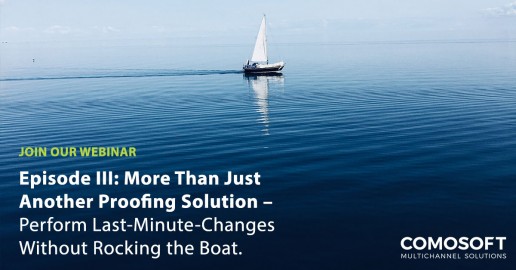Bring Multichannel Shopping Experience to Grocery Retail
Bring Multichannel Shopping Experience to Grocery Retail
When it comes to grocery shopping, customers increasingly expect an experience that allows them to shop how they want, when they want. To keep up with the competition and meet customer demands, retailers must provide an online shopping option that is easy to use and integrates well with their in-store offerings. Businesses can improve customer loyalty and drive sales growth by delivering on this multichannel promise.
Grocery stores are changing because of the pandemic. With more people focused on health concerns and avoiding crowds, grocery shopping has become an enjoyable experience through multiple channels like online ordering or delivery apps. Supply chain issues are also making inventory a more significant variable for change. Stores now must keep inventory updated constantly to ensure customers have access to a real-time account of what’s available at the store while shopping.
What is Multichannel Retail?
- Multichannel retailing provides a customer-oriented shopping experience across digital and physical channels while maintaining brand consistency.
- Multichannel retail is all about giving customers the best experience possible.
- To better serve the needs of their customers, retailers must be able to create interconnected systems that share information and support people throughout all stages of a journey.
- Successfully done, multichannel approaches can boost online sales and encourage more in-store visits.
Benefits of a Multichannel Approach
100% Transparency
Real-time inventory systems have helped retailers track the movement and availability of their products between stores, distribution centers, and home delivery couriers. In addition, with multichannel integration capabilities, it is now possible to offer customers more transparency about their orders when purchasing online since orders are tracked automatically.
“You Can Look, but You Can’t Touch.”
Online shopping has been growing exponentially, but one drawback is that customers cannot physically interact with food before purchasing. At traditional brick-and-mortar stores like Walmart or Target, shoppers or store pickers can choose specific steaks from the meat counter. They can also feel how ripe an avocado or banana is by touching them firsthand. This personal touch isn’t possible on eCommerce sites like Amazon because everything is ordered online and delivered straight to your doorstep.
The multichannel approach enables retailers to bridge the gap between online and in-store shopping by giving customers flexibility. For example, customers may opt for home delivery or pick up items on their weekly shopping list and then create a second list for in-store visits for perishables, meats, and vegetables.
Customers Spend More
According to new research from Symphony RetailAI, multichannel grocery shoppers spend on average 20% more on purchases and shop more frequently than those who visit the store. The convenience and speed of online are hard to beat. Furthermore, it is easier for customers to create grocery lists and remember items they might pick up during a regular in-store shopping trip.
Customers who purchase products online and do curbside pickup aren’t exposed to traditional in-store marketing efforts. Therefore, having a cutting-edge flyer design that integrates with your website features makes it easier to sell products and offer those impulse buys.
Is Multichannel Retail the Future?
With the rise in online grocery shopping, retailers are looking for ways to make their stores more accessible and will continue to do so going forward. As a result, the adoption rate of e-commerce will continue climbing among all types of grocery retail as this gap between an offline experience and one on continues to widen.
Comosoft’s LAGO software automates and optimizes multichannel marketing activities, significantly cutting production time and costs. LAGO has been a reliable multichannel marketing solution for over 25 years for Retail, Grocery, Agencies, and more.
2022 Marketing Trends: Why print marketing is making a comeback
2022 Marketing Trends: Why print marketing is making a comeback
Alongside many retailer tech-first approaches over the years, putting ad spend toward something more analog: the print catalog, sent alongside a slew of other direct-mail products, offers an incredible opportunity to deliver rich, tactile shopping experience targeting prospects as well as existing customers.
Cutting Through the Clutter
As advertising has become increasingly dominated by Facebook and Google, it is easy to write off print as a relic. Just look at Sears: the once-iconic catalog retailer is a thing of the past. But, more retailers and grocery giants are rolling out catalogs and flyers to hook prospects and keep existing customers loyal. Startups like Everlane and Greats and more traditional retailers, including Williams-Sonoma and major grocers, are evolving their multichannel approach to print and digital utilization of circulars. Even Amazon has launched toy catalogs!
With digital becoming more and more crowded, here are the top reasons to add direct mail or print marketing to your marketing mix as a retailer:
- Print marketing is a very powerful tool in the hands of retailers and can be used to influence customer purchase decisions. According to the Catalog Age magazine, about 70% of people who receive catalogs either buy or respond to them within six months. Catalogs influence purchase decisions by making it easy to locate what you’re looking for and then conveniently delivering it straight to your door!
- Printed advertising media such as brochures and direct mail are often consumed differently and more consciously by the recipient than digital content. In contrast to constantly available digital advertising, the consumer takes time at home to study the advertising in a familiar atmosphere. While the stream of digital advertising is often only marginally noticed in the everyday life of the modern consumer, a well-designed print brochure is a pleasant, decelerated exception.
- It is an effective tool that provides marketers with the ability to reach, engage and influence consumers throughout their entire purchase journey. Catalogs and print circulars are often used as a launchpad for multi-channel purchasing journeys by delivering great offers, building brand awareness, and driving traffic to retail storefronts (or websites). The catalog production and print circular strategy is constantly evolving to meet consumers where they are at both digitally and physically.
Combining Print with Data
Marketers are armed with a plethora of information on customer transactions and regional buying behaviors. Some retailers are using print catalogs and direct-mail products to reach those who spend more or are likely to spend more. It also becomes a more intimate and less crowded form of advertising than Facebook, Google, or email. Some retailers use print circular placement in weekly mailings with regional-specific offerings. That amount of data and print production takes tools to make teams work efficiently without being bogged down with manual processes.
Turning the page on a multichannel mix, print catalogs or retail circulars and online activity are not separate experiences.
Knowing that retailer catalogs and grocery print circulars are important sales drivers with increasing marketing ROI, more companies are turning to multichannel marketing software to simplify production workflows and digital output of their print materials.
Comosoft LAGO optimises marketing print production and multichannel implementation for retail, grocers, agencies, and more. At its core, LAGO is a PIM, DAM, and marketing production solution with an Adobe InDesign integration for checkpoint-based design, collaboration, versioning, optimisation, proofing, and digital output. Click here to see LAGO in action or to schedule a brief demo.
The Best Digital Tools Used By Successful Marketing Agencies
The Best Digital Tools Used By Successful Marketing Agencies
The holiday season is a time for marketing agency owners to take stock and plan for the future. As this whirlwind of a year begins to wind down, agencies can expect a surge of new 2022 campaign initiatives. Unfortunately, that means dealing with one item that is always in short supply: enough time to get things done!
The day-to-day schedule of a modern marketing agency is like living inside a pressure cooker. A client’s “meal” is cooked thoroughly in less time than if they did it themselves, but it’s not a pleasant experience for anyone inside. As a former ad agency manager once put it, “If I wasn’t willing to come in and work on Saturday, then I could forget about working on Sunday.”
One of the chief worries for modern agency owners is retaining the best people while still meeting the insatiable time demands of today’s multichannel market. The pressure builds with each new channel – from personalised print to social media to data-driven websites and mobile apps. Of course, each has its own set of excellent digital tools, but sometimes those very tools are part of the problem.
The Planning Paradox
Every marketing agency has various planning tools to select the product information they need and map out what a new campaign should include. Unfortunately, these tools are seldom connected with the data sources a client uses to track product details. In addition, their planning tools may provide the specs for a printed or online piece, but they rarely give the production designer a head start. As a result, each new piece must start from scratch, with the designer interpreting the marketing manager’s plans.
Unlike traditional planning tools, Comosoft LAGO entirely integrates with the client’s many data sources, including PIMs, DAMs, and pricing and inventory databases. LAGO’s whiteboarding function allows marketing managers and ad planners to select featured products based on margin, availability, and other relevant product information with each layout decision. After campaign planning, LAGO produces a layout within InDesign with all the PIM and DAM information in place as a starting point for the designer to finesse the final appearance.
The Data Dilemma
Adobe InDesign revolutionised the production of high-quality design and layout of the printed page. The problem is, InDesign can do more things than a single designer has time to do! For example, with retail and manufacturer catalogs, there are almost too many different content components to keep up with manually: PIM data, images, DAM descriptions, and so much more. A designer cannot hope to do an excellent job manually and still meet the crushing time demands of a complex catalog. In the past, marketing agency owners had to make some tough decisions. Either hire more designers (rarely an option) or sacrifice quality, accuracy, or both.
LAGO includes a powerful InDesign plugin, allowing entire “blocks” of product information to import all at once, including the necessary product information, images, and descriptions. It also provides a two-way connection with the PIM, DAM, and other data sources. So, catalog and circular ad layouts automatically update if information in those data sources change. In addition, if the designer makes changes that would affect the underlying data, an authorised manager is notified to review the change. Because this process automates a host of tedious, manual tasks, designers can focus purely on the design itself. As a result, there’s an overall reduction in labor costs, and designers can take on more projects.
The Versioning Vortex
If you thought a page designer’s life was stressful creating one catalog, imagine how much more it is when every store needs a customised version of that week’s catalog or circular ad! However, print is not the only stress multiplier. Websites and mobile apps also demand the same images and data, usually with even more frequency. As a result, agencies are at risk of not meeting the insatiable needs of their clients to fill every marketing channel with fresh, customised content.
One of LAGO’s most compelling features is its ability to create and track multiple versions of a single marketing piece. For example, it starts with the base version of a catalog or circular ad and then makes an unlimited number of regional or store-specific versions. Each version is driven by the company’s integrated data sources and planned by the regional marketing managers. Thus, a catalog version for stores in the north could feature a sale on snow shovels while the southern version could feature outdoor patio furniture – all using the same base layout. LAGO even allows the data used in a printed catalog or circular ad to automatically export to a mobile shopping app or other digital channels.
The Revision Redaction
The traditional process for checking a marketing piece for accuracy and design quality is sending out a proof to the decision-makers, both within the agency and to the client. Although digital proofs (usually PDF files) have replaced hard copies, the review-and-approval process is still cumbersome and time-consuming. Online proofing systems do exist but generally are not integrated with the overall planning, data management, design, and production system.
Fortunately, the LAGO system provides just such a proofing solution. A designer can generate and submit an online proof at any point in the production process, routed to the appropriate decision-makers. Once notified by the system, they can review the piece in question, approve or add comments or instructions, and let the designer get back to doing their jobs. This review and approval process provides a clear audit trail, eliminates a major bottleneck, and dramatically improves the agency’s time-to-market for multichannel operations.
Seeking a Sane Solution
Comosoft began working with PureRED, an Atlanta-based digital marketing agency in eleven U.S. cities. PureRED’s client, home improvement giant Lowe’s, struggled with the problems described above and needed a comprehensive data and workflow solution. As detailed in a recent case study, PureRED was able to precisely do that (and much more) by implementing LAGO for the company’s multichannel campaigns.
The challenges facing marketing agencies are not likely to abate any time soon. The opposite is true. For agency owners currently enduring the pressure cooker of multi-version, multichannel marketing campaigns, a truly integrated workflow solution offers relief – and the freedom to be truly creative. That solution is Comosoft LAGO.
Contact us to learn more about the PureRED/Lowe’s solution, or for a demonstration of how LAGO can automate your print and digital retail marketing content production.
5 Signs Your Marketing Department Needs Production Automation
5 Signs Your Marketing Department Needs Production Automation
A small business can usually get by with a simple database or two. For example, tracking the details of a hundred or even a few thousand individual products is possible with a basic Product Information System or PIM. Similarly, the images and descriptions of a small number of products can usually be sorted and stored in a straightforward Digital Asset Management or DAM system.
But not all companies are small—or want to stay that way. If your company’s products number in the hundreds of thousands (or more), then your marketing department will be quickly overwhelmed—especially when each product is promoted across print and digital channels.
Also, consider this. If your company sells multiple items, then product information like images, descriptions, prices, and other vital data comes from different sources! Untangling and connecting all that moving data in a way that makes it practical for a marketing team’s use requires a robust automation approach. Without it, marketing will remain slow, unresponsive, and ultimately ineffective in a crowded, multichannel world.
Diagnosing the Problem
Here are five indicators that your marketing department needs to consider automating its data and production infrastructure. Remember that production automation is not a threat to marketing professionals’ jobs. On the contrary, if done right, it frees creative marketing professionals to do their jobs well!
1. Your multichannel workflow is mostly manual
Today, customers have access to scores of different media channels, each requiring its own set of rules for data input, layout design, editing, and distribution. If your production designers must start from scratch for any print or digital output, then you’ve already lost the race. Only a truly integrated, templated workflow – repurposing each design and data decision to serve multiple outputs – can keep your marketing department in the game.
2. Your legacy data systems do not communicate with each other well – or at all.
Many PIM and DAM systems are holdovers from a company’s IT past or acquired in corporate mergers. Older systems typically do not share data well or in the same way with modern technology. Without efficient data transfer, compelling product offers cannot be delivered accurately without the risk of costly manual workarounds. Given today’s pace of business, having non-integrated data sources is just not acceptable.
3. Your “siloed” systems have outdated or conflicting information for the same product in a campaign
People make mistakes. So do legacy PIM, DAM, and other systems containing data entered by those same people. Standalone databases are especially prone to this. When a PIM data field is outdated, or when a DAM identifies the wrong version of a product image, then a print catalog or mobile app campaign can grind to a halt, requiring many hours of manual searching to fix. Marketing campaigns will suffer without well-planned production automation (and databases that communicate with each other).
4. Your review and approval cycles are burdened with manual steps and bottlenecks.
For every marketing campaign – from print to digital – someone must be there to proofread and correct costly mistakes. Sometimes, there is more than one decision-maker to review and approve a complex marketing piece. In today’s fast-paced, multichannel world, a cumbersome, manual review process can derail your campaign’s timing goals – and your budget.
5. You cannot easily create personalized or region-specific versions of your marketing campaigns.
If you have more than one store, then you have more than one set of marketing priorities. The larger your operation, the more complex are your marketing goals. A one-size-fits-all campaign no longer works. If you cannot easily create region- or store-specific versions of your promotional pieces, then you cannot succeed in today’s fast-moving consumer market. Your customers expect region-appropriate, even personalised information – IF you can deliver.
Prescribing the Solution
Fortunately, there is a solution to all five problems, and more, as retail marketers around the world are discovering. For example, Europe’s leading packaging, warehouse, and office supplies supplier has twenty-nine offices in sixteen different countries. With over 200,000 different products and billions of euros in revenue at stake, the company could not afford a manual workflow for its multichannel marketing campaigns. Instead, its PIM, DAM, and other data sources had to be connected, accurate, and agile – as did its planning, production, and approval workflows. Above all, each piece had to be quickly and automatically versioned to accommodate the vastly different conditions for each country.
Their answer was Comosoft LAGO, a fully integrated production automation platform for creating complex, data-driven, and omnichannel marketing. Once data was integrated and Comosoft added representatives from all sixteen countries into the LAGO web environment, the company could use the system to produce its print and digital catalog – at tremendous savings in time and cost.
The creative marketing director of any company has far too many things on their plate to stop and think about automation, integrated databases, versioning, or production workflows. And yet, their success depends on those very things. Without systems that communicate automatically and resolve the production bottlenecks, they cannot focus on their primary job, to control the creative design process and reach customers with compelling, customised campaigns.
Comosoft LAGO is many things. It’s more than a PIM, a DAM, a planning tool, a production automation system, and a versioning powerhouse. It is all of those things and more – combined to help creative marketing teams thrive in a relentless, multichannel world.
Contact us to learn more about successful implementations of Comosoft LAGO, or for a demonstration of how LAGO can automate your print and digital retail marketing content production.
6 Workflow steps you really need to efficiently manage your print publishing as a retailer
6 Workflow steps you really need to efficiently manage your print publishing as a retailer
Print brochures (inserts/flyers) continue to be an important part of a retail chain’s marketing, as has often been mentioned. They are an important orientation for the shopping consumer. If they are created by modern software designed for this purpose, they can even provide real-time information and offers for digital formats.
The process for creating these marketing pieces can be complex, tedious, and expensive. Layout planning can be done on handwritten notes, separate Excel spreadsheets, or both. Asset management and page design can be just as laborious – manually finding, opening, or placing images and text in InDesign, using a separate server with no DAM. Proofing and approval can consist of physical proof output and markup, accompanied by long email and phone conversations. The final product can then consist of individual PDF files for each version, and so does not yet have a link to the retailer’s online advertising space.
Fortunately, it doesn’t have to be that way. Here are six highly automated workflow steps that can eliminate manual drudgery.
1. Campaign Planning
Retail product managers and designers are often scattered around offices worldwide, especially with the recent rise in remote working. Comosoft LAGO provides a common whiteboarding environment for all stakeholders. Marketing managers can easily select the products to be featured based on profitability, availability, and other factors, and designate where they should appear in the circular. They can also insert store specials and other variables. The data for these decisions are available instantly from the retailer’s integrated Product Information Management (PIM) system, Digital Asset Management (DAM), and related databases. Once a campaign is underway, the marketing manager can track the success of a particular product or group of products.
2. Asset Management
In LAGO, the marketing manager and designer do not have to manually locate and update the many images, descriptions, SKU numbers, and countless other variables associated with each retail product. Instead, LAGO’s integration with DAM systems pulls in and allocates all of these elements – plus special offers – as “blocks” of related visual pieces for a designer to finesse in Adobe InDesign. If a product image or other component is replaced or changed in the DAM, it is automatically updated in the layout until shortly before printing.
3. The Production Process
Adobe InDesign is the most common software for designing and editing print products, but manual editing is resource-intensive and prone to errors. In the design process, retail brochures are prone to content inconsistencies because each product on the page contains many related text and image elements that must be transferred from other systems. LAGO provides you with a design management environment that automates manual tasks and reduces errors. Related product information and images stay connected to their respective data sources.
4. The Proofing Process
Manually created proofs and disconnected markups are a thing of the past. Instead, LAGO can automatically generate a digital proof of any project (and its localised versions) for online review and annotation. Timestamped comments and corrections can be easily found, creating a reliable and secure audit trail. The user-added correction marks are linked at the offer and/or page level and overlaid directly on the document in InDesign. Change requests are easily and automatically conveyed to the production designer.
5. The Approval Process
During the proofing process, it is normal for more than one person to review the product with all promotional components for accuracy and approve proposed changes or corrections. In the past, this was an extensive process that was passed from one person to another – even for digital documents. With LAGO, the approval process is parallel and highly automated. Authorised managers are notified of pending page reviews and can approve or modify them from anywhere in the world. LAGO’s integrated, visual approach reduces the time required for approval and significantly shortens the overall time-to-market for multiple flyers and their regional or branch-specific versions. In addition, the status of each component of a campaign can be tracked and easily monitored so that potential bottlenecks can be easily identified and resolved.
6. Production Output
Print runs for multiple versions of a complex retail brochure have been a logistical challenge. Retailers spend many resources customising the various product offerings based on regional and individual input – with each manual edit introducing the possibility of errors. Comosoft LAGO automatically creates and manages an unlimited number of versions of each brochure. Each version is tailored to the needs of a region or branch, while maintaining a solid link to PIM and DAM data. Thus, a designer’s work in creating a flyer is automatically reused for multiple, region-specific versions, all under the control of the company’s marketing strategy.
Printed circulars also have an online companion – the retailer’s mobile app or browser-based content. Each offer in a circular or version must also have the same offer online, with the same region- or store-specific variations. Fortunately, this does not have to involve “re-inventing the wheel”. LAGO campaign data for printed circulars export to an online mobile app – including product availability and location in a particular store.
Working Smarter
The drudgery of creating circulars and other retail marketing material is a costly burden for any organization. Thankfully, manual labor is significantly reduced via intelligent integration of a company’s data sources with the workflow automation available in Comosoft LAGO.
Contact us for a demonstration of how Comosoft LAGO can multiply your efficiency in producing print and digital retail marketing content.
Top 4 Ways To Leverage InDesign + Automation To Easily Manage Retail Catalogs
Top 4 Ways To Leverage InDesign + Automation To Easily Manage Retail Catalogs
Ever since the iconic Sears Big Book catalog – and more recently, the IKEA catalog – stopped publication, it may seem like print catalogs are no longer relevant or effective in marketing to today’s retail consumers. We would argue, however, that they are making a comeback and may be more important than ever.
The Wall Street Journal and Mobile Commerce are reporting that print catalogs are very much alive and well – and still result in approximately $850 in average annual purchases per consumer. This comeback is supported even further by mega-retailers Amazon and Wayfair who do nearly 100% of their sales online, but still print and send catalogs.
How Are Print Catalogs Still Effective?
Two main drivers for this apparent comeback are the changing retail experience and the overcrowded space available to grab your customer’s attention.
While brick and mortar shopping has declined, consumers still demand the same experience when shopping. A well-designed and branded catalog can provide the feel of in-store shopping with familiar lifestyle images and product display. Some catalogs’ designs are even on par with expensive coffee table books.
While digital marketing is important, it’s gotten more crowded with more barriers and less tracking options to reach your target audience. Getting your full product line and advertised incentives into your customer’s hands can be gold. The catalog is a tangible offering that showcases so much product data through text and graphics, that it becomes even easier than shopping online. All the information they need is right there, and they can mark the products they want to remember.
The compelling beauty of a complex retail catalog page comes with a high cost – the cost of managing mountains of product data.
This can be much more powerful than a banner ad or other display marketing options. We don’t need to convince you of all the potential image variants, product-specific databases, along with text descriptions, sizes, color choices, SKU numbers, prices, and localized inventory and specials. With so many available controls and catalog plugins for InDesign and so many data sources to manage, the potential for disaster is high.
Automation to the Rescue
Thankfully, Adobe InDesign is more than amenable to third-party automation software. It allows ordinary users to accurately juggle massive amounts of product data, in multiple data sources, without sacrificing Adobe’s design elegance and typographic prowess.
Here are four ways that Comosoft LAGO’s approach to automation accomplishes the seemingly impossible. It gives designers the autonomy they need, the accountability their managers require, and most of all, the ability to achieve high page throughput in the demanding retail environment.
1. Leveraging the InDesign Workflow
Since introduced twenty-one years ago, InDesign has allowed users to “place” digital images and text on a virtual page—controlling each element with pinpoint precision before sending the results to be printed. LAGO fully supports that powerful feature but, instead of leaving image and text selection to chance, it makes sure the designer has rapid, unerring access to the right images and text. As a result, LAGO connects the designer with all the correct product data, releasing them to focus on the creative process.
LAGO also leverages InDesign’s basic architecture by supplying templates with pre-selected product combinations for the more mundane sections of the page. (More on these in section 2.)
The designer still retains creative control and can override the template settings to make the page aesthetically pleasing. However, suppose they must make a change that reflects a product’s data in a catalog. In that case, the proposed change automatically goes to the product marketing manager for approval so later versions can be well managed. In addition, designers do not have to worry about the myriad details of pricing and SKU numbers, which are automatically supplied from their respective databases.
2. The Power of the PIM
Product Information Management or PIM databases are at the heart of major retail operations. They contain most business information about each product sold and are essential for ordering, tracking, shipping, and warehousing potentially millions of different products. Sometimes, they include pricing and inventory levels, which can fluctuate at a moment’s notice and vary by season, region, or even unforeseen circumstances – like hurricanes or pandemics.
Product marketing managers use PIM data to plan each sales campaign for most major retailers – usually well in advance. LAGO allows them to continue using their existing PIM, creating a visual whiteboard of the featured products. They can even prioritize products with higher margins, excess inventory levels, or products specific to a season or geographic region. These campaign plans automatically generate “blocks” of related information in a template for the InDesign user. They even include product imagery from a Digital Asset Management or DAM system (see 3., next). Once the catalog is done, the product manager can track the sales performance of a particular product specified for a catalog campaign.
While Comosoft’s LAGO often integrates a retailer’s existing PIM database with its separate pricing and inventory databases, it also offers its own PIM. As a result, they have years of experience integrating and automating data input from product manufacturers. Fortunately for InDesign users, however, all those torrents of product data are managed in the background so that they can focus on sound design.
3. Dynamic DAM Automation
Most retailers also maintain a complex Digital Asset Management or DAM system for managing photographic images, color swatches, text descriptions, product reviews, and other assets related to each product sold. These assets can change at a moment’s notice – with every new product release or modification, as well as every recent product shoot. Therefore, a DAM must not only hold all the available photo and color variations, but it must also keep track of image versions – to prevent an old image from being used for a new release of a product.
As mentioned earlier, LAGO spares the InDesign user from the hours-long task of finding the exact right image – or version of the image – by creating product-specific “blocks” of information. But it goes further than that! For example, suppose a new product image is created and added to the DAM system. In that case, the InDesign layout automatically updates with the correct image (with notice to the right people) right up to the moment the layout exports for print.
4. Solving the Versioning Dilemma
Perhaps the most challenging aspect of catalog production is the need for multiple versions. Each geographic region or even each store has widely different sales needs and priorities. Sports equipment that would sell well in Minnesota would not do as well in Florida, for example. Without InDesign catalog automation, the user would have to create separate regional, store-specific, or language-specific versions of every catalog – mostly from scratch.
Thankfully, LAGO automates the entire versioning process. Multiple variants could be created from a single core catalog, each using PIM and DAM data as directed by the regional or branch marketing manager. The same data from LAGO can populate the retailer’s website or mobile app, further leveraging the “upstream” work by the product marketing department.
Designers using Adobe InDesign are still creating printed content in the form of compelling, beautiful catalogs. The difference is that, with LAGO, they can do so accurately from managed data and amplify output over multiple print (and online) versions in a fraction of the time.
Schedule a live demo
Contact us for a demonstration of how Comosoft LAGO can multiply your efficiency as a retail catalog designer.
LAGOmation: The Real-World Promise of Data Driven Marketing Automation
Industrial automation is an accepted reality. Automating marketing communication production is a much different thing. Is automation even possible in the fast-moving, data-intensive world of multichannel marketing?
Automation has been a fact of life since before the Industrial Revolution and self-regulating steam engines, water mills, and looms. Having one machine that could do the work of many workers was the eighteenth-century industrialist’s dream and the manual laborer’s worst nightmare. Fast forward to today. Robots and high-speed assembly lines are the rule, not the exception.
But automating physical tasks is easy compared with the daunting task of automating data processes—especially when it comes to marketing. There are so many subjective variables, and so many different output channels. The goals are the same, however. Besides lowering costs, automation will accomplish a number of tasks.
- Increases quality & accuracy (less flawed output)
- Increases customization within reason (more output variety)
- Increases throughput (more output-per-hour)
- Relieves workers of boring tasks (less output fatigue)
- Increases worker innovation potential (more time for Output 2.0!)
Now, replace the word “output” with retail promotions, or any other marketing campaign deliverable, and you’ll see the potential—and the difficulty—of applying these principles in the real world of marketing.
Mapping the Problem
In simpler times, marketing communication was a linear process. Agencies and brands would cook up the message, test it with a focus group (or not), and start the assembly line of designing, writing, and illustrating the finished product – for broadcast or print production. Budget size mattered, but most of the time everyone knew what to expect.
Today, it’s a lot more complex, with a lot more variables and room for error. We still need well-designed, visually persuasive results, but the “ingredients” of a campaign (the product data) and the sheer number of output channels have made the process difficult, if not impossible to manage.
We still need well-designed, visually persuasive results, but the “ingredients” of a campaign (the product data) and the sheer number of output channels have made the process difficult, if not impossible to manage.
For one thing, data about a product is never just in one, convenient place. It’s spread out over different product information management (PIM), digital asset management (DAM), inventory, pricing, and marketing management and other databases. Many of these are proprietary, or acquired during a merger, or just outdated. Now, multiply that by the number of products and product variants being sold.
Next, if a business has more than one location, chances are high that each store or region will have exceptions on price, inventory, or sales priority that will affect every marketing campaign. Each location deserves some level of autonomy—which will help them succeed—but the price of customization can’t be too high.
Finally, there seems to be a new communications channel invented every day. Retail and B2B marketers must cope with multiple platforms, devices, and media interactions – and still deliver a coherent, compelling message. It takes time—usually more than we have.
Real Marketing Production Automation
If you’re still with me, take heart. The challenges of marketing data automation can be addressed with the right approach, starting with Comosoft’s LAGO application. Its approach to marketing data automation, or LAGOmation for short, is based on years of experience and a stubborn determination not to fit neatly in any one software category.
- LAGO has its own PIM system, but it can work with any PIM.
- The same goes for DAM systems.
- It can work with databases of any kind—small or large, open or proprietary, local or in the cloud.
- It works extremely well with Adobe InDesign and other desktop design applications, but it’s not bound by those programs’ manual functions.
- LAGO is a powerful, print automation system but can output to any digital publishing medium, like mobile apps or web shops.
You get the basic idea. LAGO lets marketing managers plan complex campaigns from complex data, wrangle that data from multiple sources, and automate product placements, exceptions, and channel output. This frees their designers from the drudgery (and cost) of creating umpteen different outputs and versions for umpteen output channels – focusing instead on creativity and innovation.
The benefits of LAGOmation have already been realized by major retailers and other businesses around the world, including several of the largest home improvement retailers and grocers in North America. Time and again, these companies have seen significant cost benefits from modernizing their marketing communications “assembly lines,” while also expanding their marketing reach through regional versioning and mobile channel content – all without adding staff resources.
Twenty-First Century Realities
Retail consumers’ expectations are expanding faster than any retailer can meet with traditional, largely manual techniques. Information must be immediate and personally relevant – on any medium and on demand. Retailers have a vast supply of data to go with their myriad product offerings, but all that data simply will not fit through the traditional “pipes” of marketing communication production. Only true automation will suffice.
LAGOmation, our unique approach to modernizing the marketing workflow, is a way to streamline that vital business process. We would be honored to begin that discussion – and find new ways to connect your data with your many customers.
Webinar: EPISODE III
Episode III: More Than Just Another Proofing Solution – Perform Last-Minute-Changes Without Rocking the Boat.
Join the final episode of our global webinar series showing a fully optimized circular production process with LAGO.
EPISODE III: 08. April – 4:00 pm CET | 3:00 pm GMT | 9:00 am CST | 10:00 am EST
The participation is free of charge. To register for our first webinar click on the button below.
The proofing process within a leaflet production is more than just asking for different page background or price adjustments. During the final days before pages are sent off to the printer, pretty much anything can happen. Product pricing or copy needs to be updated, images may change, products are moved to a new position or switched for a complete new product. When adding regional and/or store specific variants into the mix, the complexity grows even more and the communication needed to perform all these changes starts to become one of the biggest time sinks in your whole production process. This is why LAGO Proof is more than just a simple proofing solution to add comments asking for a different page background. Learn how LAGO Proof in conjunction with LAGO Whiteboard are solving all of the above challenges. Price updates 5 minutes before files are sent to printer? It’s not science fiction. It’s reality!
- Easy to use proofing application
- Overview of complete leaflet including all regional and/or store specific leaflet variants
- Automatic price updates, triggering an update of price mechanics on the InDesign page based on business rules
- Reposition, removal or adding of products throughout the production process
- Automatic creation or removal of regional and/or store specific leaflet variants based on data changes
We are looking forward to seeing you there!
Webinar: EPISODE II
Building Bridges Between Category Management and Marketing – Tear Down Your Communication Walls and Optimize Your Workflow!
Join the second episode of our global webinar series showing a fully optimized circular production process with LAGO.
EPISODE II: 25. March – 4:00 pm CET | 3:00 pm GMT | 9:00 am CST | 10:00 am EST
The participation is free of charge. To register for our first webinar click on the button below.
- Direct integration between LAGO Whiteboard and LAGO Layout
- Consistent data flow between category management and design team
- Automatic layout creation using smart templates
- Placeholder technology to automatically display pricing, copy and everything related to a product within Adobe InDesign
- Automatic creation of regional and/or store specific variants for the design team
We are looking forward to seeing you there!
Webinar: EPISODE I
Kickstarting Your Digital Planning and Leaflet Production Process – Push Your Category Management Into the Future of Retail!
Join the first episode of our global webinar series showing a fully optimized circular production process with LAGO.
EPISODE I: 11. March – 4:00 pm CET | 3:00 pm GMT | 9:00 am CST | 10:00 am EST
The participation is free of charge. To register for our first webinar click on the button below.
- Planning of leaflet in LAGO Whiteboard
- Utilization of product data directly imported from ERP system
- Planning of regional and/or store specific leaflet variants including switch-out products
- Stickering: The easy way to see all product related data during the planning process, including historical sales data
- Assignment of merchandise departments to page space allocations for a streamlined top-down planning process
- Preview leaflet pages without handing them over to the design team
We are looking forward to seeing you there!








